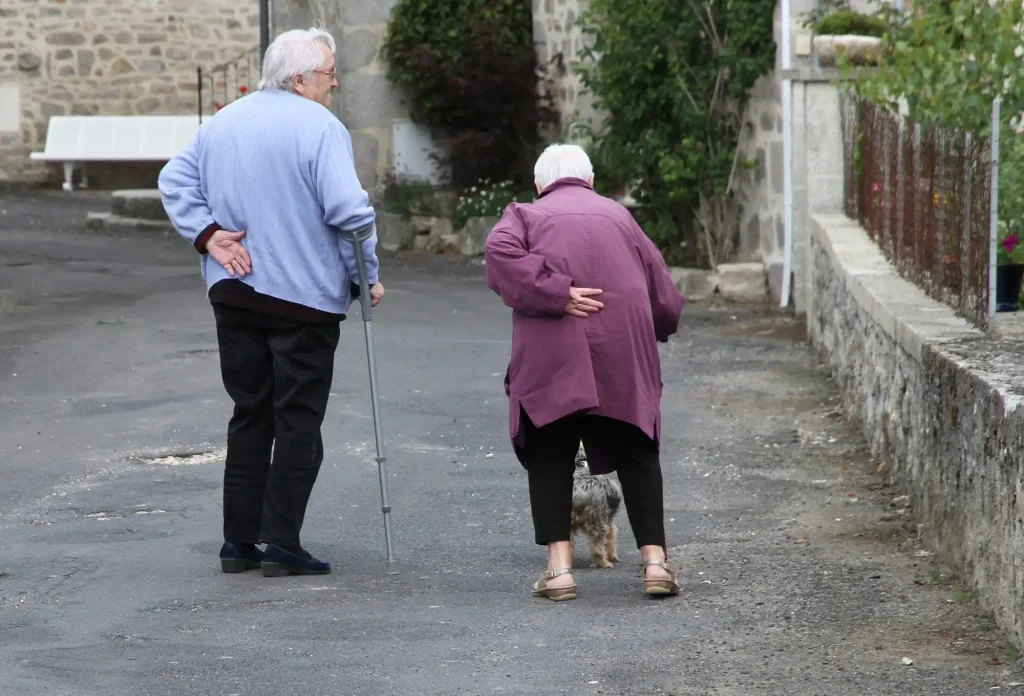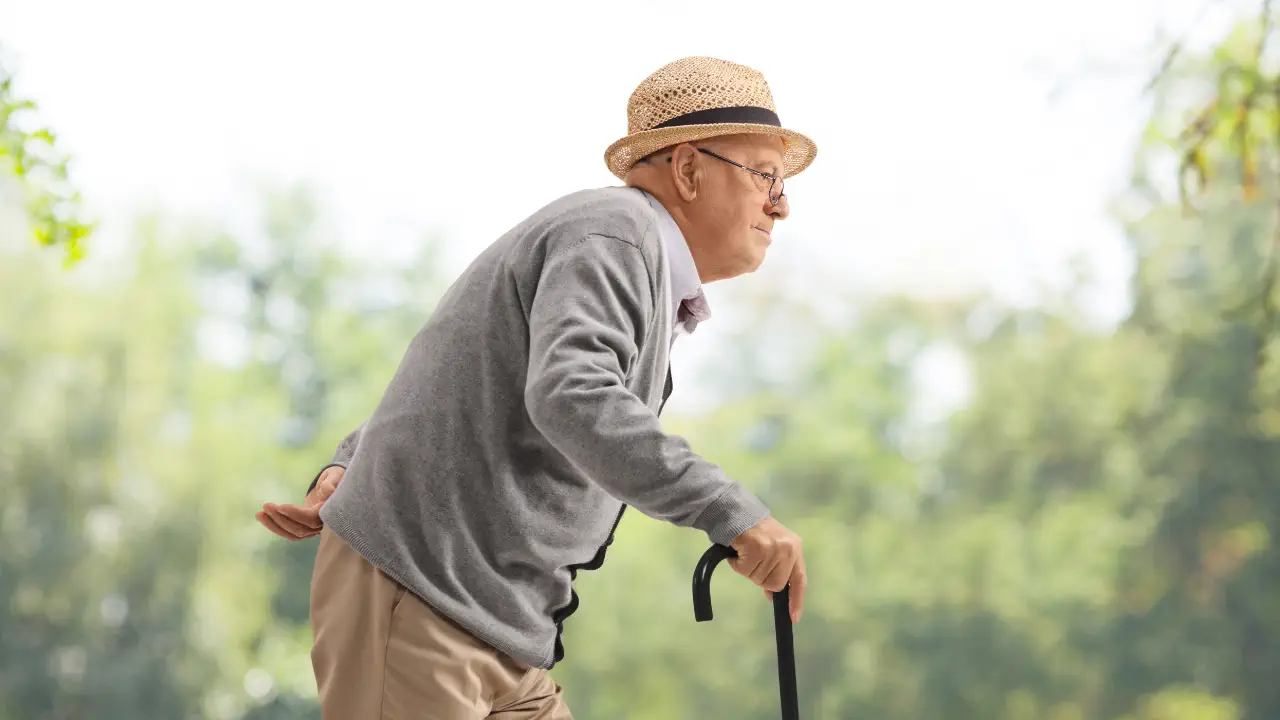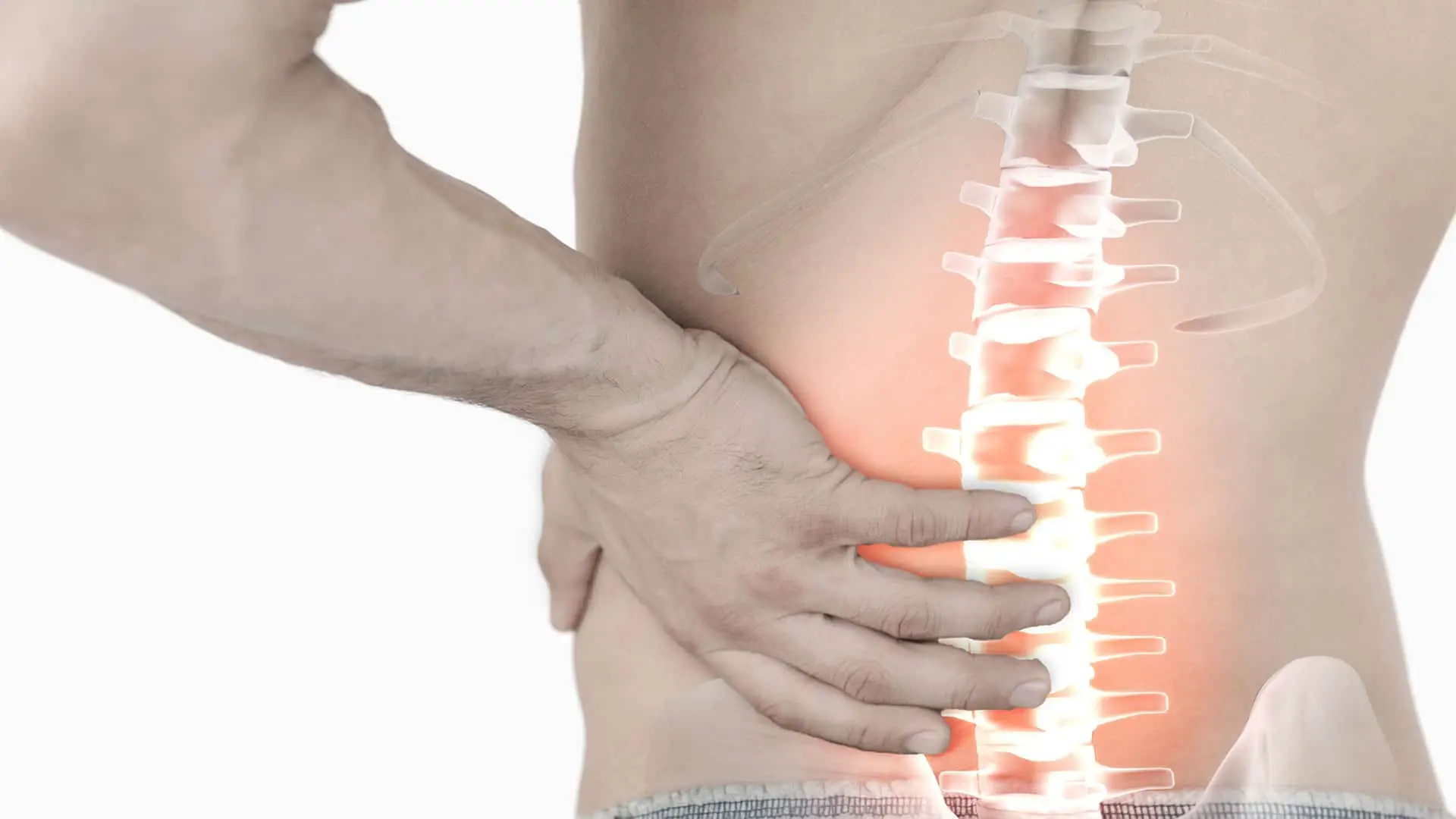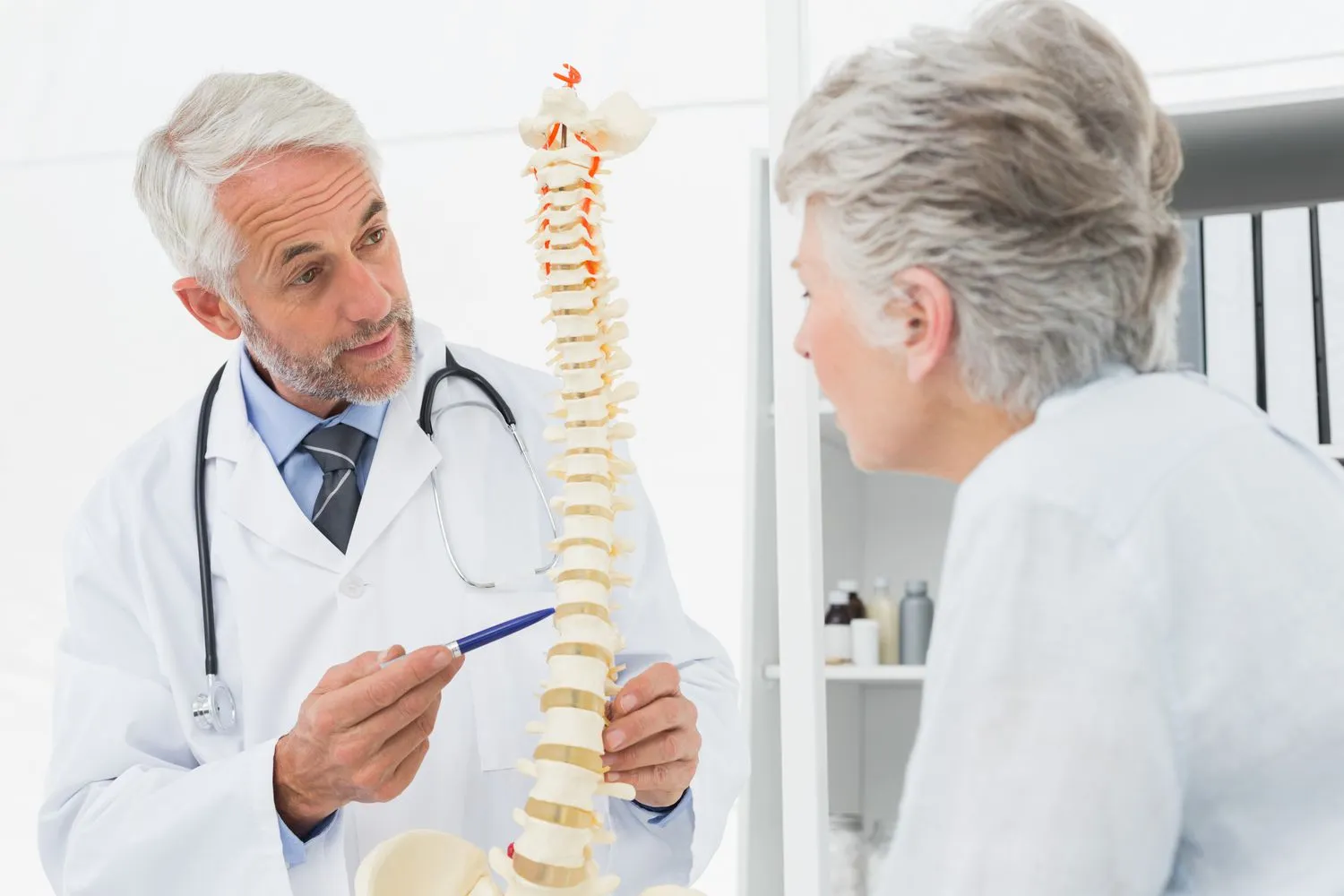
What Causes Bent Back In Old Age +Important Factors
Maybe you also have this question that what causes bent back in old age? In this article from humanhealthmag, we want to answer this question. If you’ve ever gone for a walk in a park or street, you’ve probably seen many elderly people walking hunched over, as if they’ve lost weight compared to their youth and middle-age days. This phenomenon is so common that many consider aging to be equivalent to shrinking and hunchback. The reality is that your spine can begin to collapse as early as your 30s.
What causes elderly to be bent over? The reasons for this gradual bending are different, the most obvious of which is the increase in the curvature of the spine. Age-related slouching is known as old folks’ posture and occurs when our muscle fibers degenerate over the years. As a result, the muscles around the spine become weaker and we begin to lose the battle against gravity, eventually losing the ability to stand up straight. In the following, we explain the reasons for age-related hyperkyphosis.
What Causes Bent Back In Old Age
As we said in the article how much height loss is normal, the bending of the human body is not the same as muscle wasting. However, the processes associated with aging cause us to literally shrink in terms of volume. One of the most important factors of this shrinking is the decrease in bone density. This phenomenon is caused as a result of aging and with the decrease in the production of estrogen and testosterone hormones in the body.
Lack of vitamin D and decreased renal calcium absorption in older age can aggravate this process and sometimes lead to a bone disease called “osteoporosis”. As bones become weaker and more porous, the vertebrae that make up our spine can crush under the weight, causing fractures known as “compression fractures.” In the following, we will say in more detail that what causes bent back in old age?

The Cause Of Back Bending In the Elderly
In your opinion, what causes bent back in old age? The cause of bending and unusual changes of the lumbar joints with age depends on various things. In fact, with increasing age due to genetic factors, lifestyle, accidents, etc., unconventional changes occur in the back joints. The main reasons for bending the back in old age are:
- Osteoporosis and osteopenia: with increasing age in women after menopause and in men around the age of 65, people will suffer from diseases such as osteoporosis and Osteopenia, as a result of these two diseases, bone density declines, which is the most important Its cause is lack of calcium in the body. With the occurrence of this disease, the bone density of the spine also decreases, which will gradually cause bending and changes in the lumbar joints.
- Intervertebral disc changes: Intervertebral disc changes can be considered as another cause of bending and unconventional changes in lumbar joints with age. The vertebrae of the spine are separated by a gelatinous cartilage. As the age increases, these discs lose their gelatinous state and their flexibility also disappears. In such a situation, all the vertebrae of the spine are pressed together and a phenomenon called kyphosis (leaning forward) occurs in this part of the body. This is a natural process in the body, which occurs with age in the body of people.
- The process of sarcopenia: In this section, we will examine a cause of bending and unconventional changes in the lumbar joints with age, called the process of sarcopenia. In this process, with increasing age, muscles contract and instead of muscle tissue, fatty or fibrous tissues are used. This phenomenon will cause the spine to bend in the body and shorten the height.
- Body shape change: Another reason that affects the bending and changes of the back joints with age is the change of the body from a muscular state to a state full of fat. In fact, the body’s metabolism slows down after the age of thirty; Therefore, fat tissue replaces muscle. Often fat accumulates in the abdomen and around the waist, the accumulation of fat in this part of the body causes changes in the spine of 55-year-old women and 65-year-old men.
- Pathological processes: Pathological processes such as bone fractures and arthritis are also the cause of bending and unconventional changes in the lumbar joints with age. As a result of this process, the bones and discs will experience unpleasant experiences such as becoming harder, more curved and more painful.

What Causes Bent Back In Old Age: Changes Of Lumbar Joints
In the continuation of what causes bent back in old age, we must say that with age, bones become weaker and break more easily than before. As the age increases, the height becomes shorter; Because the cartilaginous tissue between the spine has been destroyed. On the other hand, bone fracture causes complications such as pain, inflammation, stiffness, and body shape change. In general, changes in the joints in the body of all elderly people can be seen from minor to severe arthritis.
Another obvious sign of changes in the back joints is the bending of the body. With increasing age, the crooked neck, narrow shoulders, wider hips, and generally the body looks more bent. As people age, their movements will become slower and even more limited. The steps become shorter and people walk more slowly, also people will have less energy and get tired quickly. The last thing that we will mention in this part of the article is the decrease in strength and endurance of people, the reason for this is the loss of muscle mass.
Causes And Treatment Of Back Pain In the Elderly
In this part of the article “what causes bent back in old age” we describe the cause of back pain in the elderly. In the following section, we mention the main causes of back pain in all strata, especially the elderly. Since the elderly have problems in taking care of themselves, it is recommended to use an elderly nurse at home.
- Standing and back pain in the elderly: To care for the elderly, always remind him to always stand straight and keep the shoulders straight. Contract your stomach so that your belly goes away and your waist becomes smaller. The caregiver of the elderly should prevent the elderly from standing motionless as much as possible, or if necessary, place a 20 cm high stool under one leg and change the position of the legs after every ten minutes.
- Too much sitting and its harmful effects: being in work environments that require long-term sitting or environments where there is little mobility can cause physical movement problems in all people. Back pain is one of the most common physical and movement problems that can be reduced by correcting movements or observing certain points.

- The effect of sleeping and back pain in the elderly: It is better to put a short pillow under the head of the elderly while sleeping and use a hard mattress or several layers of blankets. If the elderly person sleeps in an arched position or on his side, and if they do not have knee pain, put a short pillow under the knee. It is better not to sleep on the stomach. To get out of bed, first turn the elderly to one side. Tell the elderly person to tighten his abdominal muscles and sit with the help of his hands and then stand up. Reverse these steps to lie down.
- Care in dressing: The elderly should take care not to bend over to put on or take off pants and socks. Sit on a short chair or lean against the wall and do this while keeping your back straight by bending your thighs and knees. To wear shoes, he can put his foot on the stairs and use a long-handled heel puller.
- The correct way to lift a heavy object: the elderly nurse must be careful so that the elderly avoid lifting heavy objects. But keep in mind that even a light object, if not removed correctly, can cause back pain and severe back injury.
Concluding Remarks
In previous article, we talked about what causes hallucinations at night in elderly? In this article, we answered the question that what causes bent back in old age? We hope this article was useful for you. If you also suffer from these changes caused by aging, you should definitely see a doctor to reduce pain and improve symptoms. Note that an elderly person with back problems needs care and nursing. In these cases, the elderly nurse can play a significant role in improving the condition of the elderly by using effective treatment methods, controlling the time of taking medicines, controlling the elderly’s weight and diet.

FAQs About What Causes Bent Back In Old Age
Is Exercise Useful for Back Pain In the Elderly?
Performing some sports movements in people and the elderly helps to treat back pain. You should be careful not to injure your back or spine while doing sports. The foot massage method for treating back pain can treat bruises, cramps and back pain. This method involves massaging points of the foot.
What Is the Cause Of Waist Bending In the Elderly And Short Stature?
There are several factors that predispose us to change in posture as we age, and each is considered. The main factor that contributes to the curvature of the spine is the change in the intervertebral discs. Between each vertebra is a gelatin-like cartilage that separates the vertebra. As we age, these discs harden and lose flexibility, the inevitable result of which is the compression of the entire length of the spine and a forward tilt known as kyphosis.
